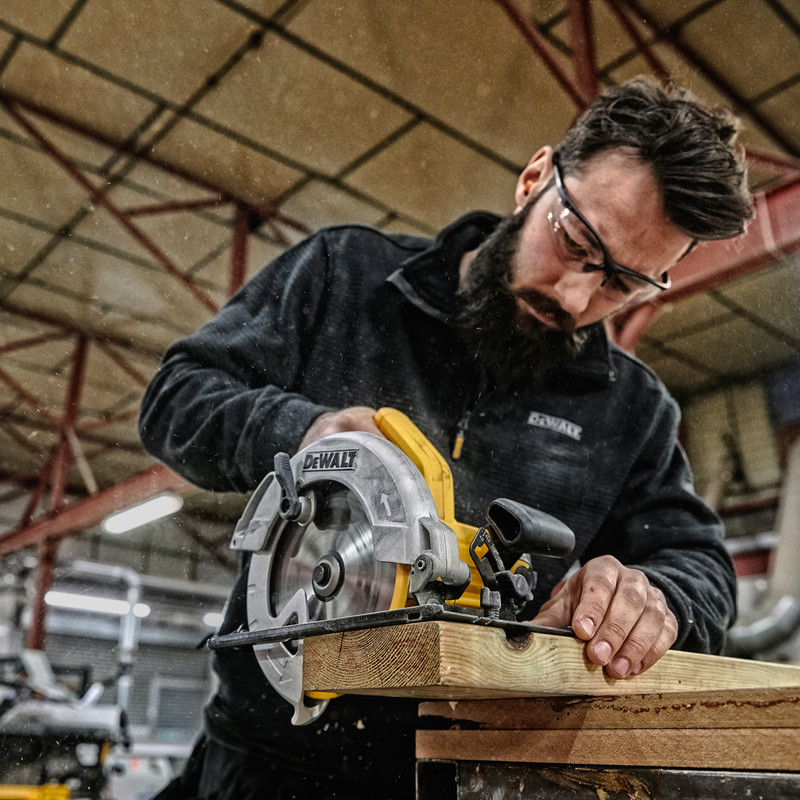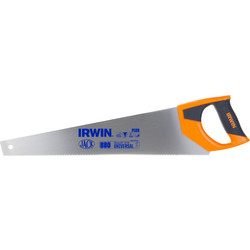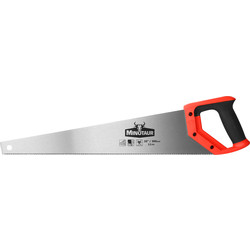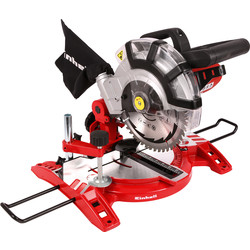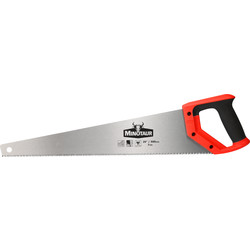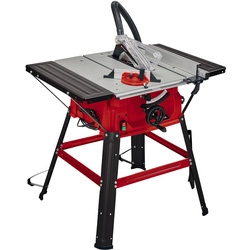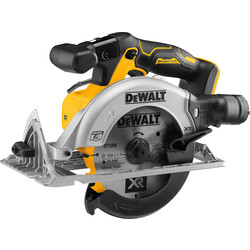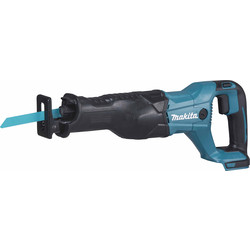There are many different types of saws, and whether you’re cutting wood, plastic or concrete, you’ll find many saw types perfect for any job at Toolstation.
There’s a lot to consider when choosing a saw, like the material you’re cutting, the precision you need for the project, and the speed you need things cut.
Hand saws are a staple of any toolkit, giving you greater control and precision, not to mention they’re often safer to use. That said, power saws are usually faster, easier to use and more powerful, cutting through tough material with ease. You'll find a range of hand saw types and power saw types covering all cutting jobs.
Once you’ve narrowed down whether you need a hand saw or a power saw, you’ll want to think about a number of features, including teeth per inch (TPI), blade material, handle type, and size.
We're on hand to help! In this guide we'll be covering the many types of saws and their uses, helping you make the right decision.
Types of Hand Saw
Hand saws are perfect additions to any toolkit, and are loved by DIYers and tradies alike. You'll find types of hand saws suitable for a range of materials, including wood, plasterboard, metal and plastic.
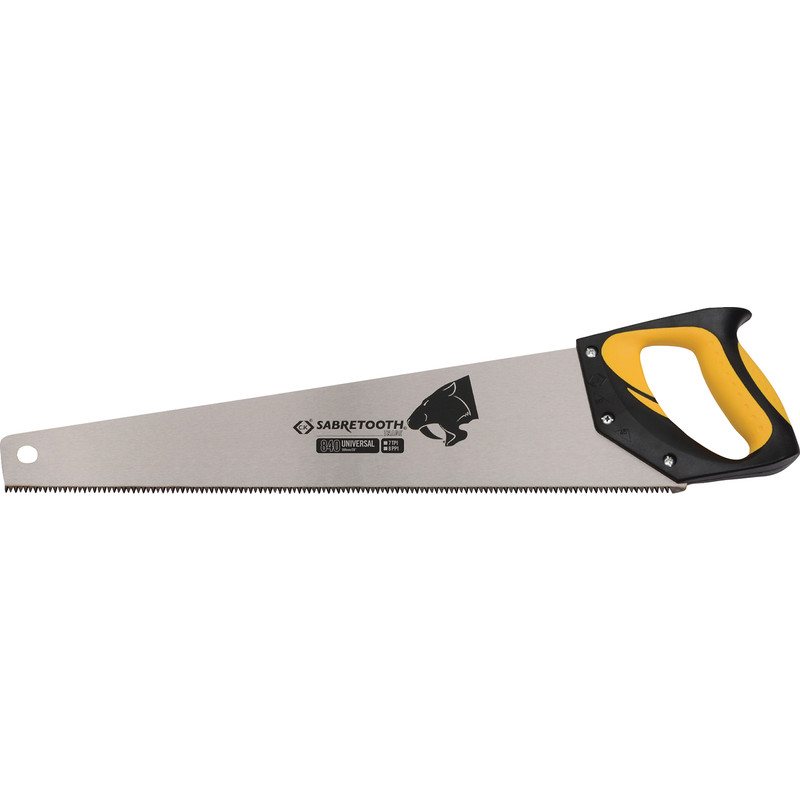
Universal/Panel Saws
Universal saws, also known as panel saws, have a large blade and a closed pistol handle. They’re designed to cut the wood with a push and a pull stroke, and are used in both professional and DIY situations. Window fitters may also use panel saws for cutting uPVC frames.
Panel saws are versatile, especially for DIYers, and will cut through a number of building materials including plastic and wood – making them an ideal addition to a toolbox. They’re great at making quick, straight cuts which is perfect for random tasks around the home and by tradespeople.
Universal saws have a large blade, making them far less suited for intricate cutting and in awkward, tight spaces. As a more general saw, it will often be best to get a purpose-made speciality saw for many situations, as you’ll achieve a better result.
Advantages
-
Versatile for DIYers and tradespeople alike
-
Great at making quick, straight cuts
Things to Consider
-
Large blade, less suited to tight spaces
-
Speciality saws will often be better suited in many situations
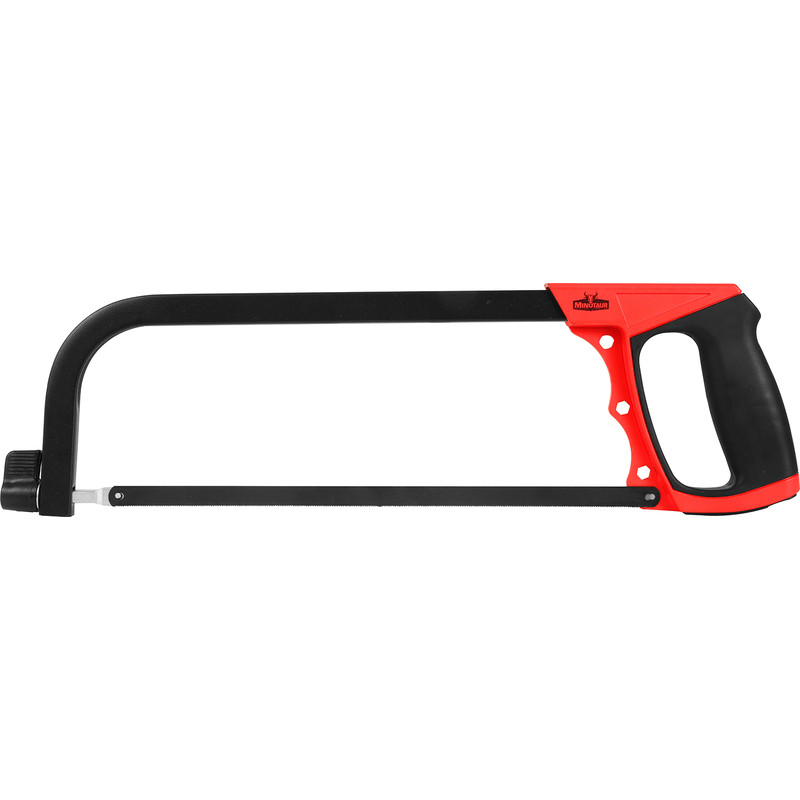
Hacksaws
Hacksaws have a U-shaped frame with a handle at one end. Small pins on each end of the frame hold the blade in place and a tensioner nut is used to extend the frame and tighten the blade into place. Hacksaws are often used for cutting metal pipes, rods, brackets and plastic – commonly by plumbers and occasionally electricians to cut conduit.
They’re able to cut on the pull stroke or the push stroke, depending on the direction you install the blade - which means they’re more versatile than saws that can only cut in one direction. Hacksaws are ideal for small-scale cutting and are very easy to use – making them a great addition to DIY and trade toolkits alike.
Hacksaws require a level of strength to operate effectively because they have a small blade with fine teeth. They can also only be used for small jobs, so their uses are limited if you’re wanting to cut into large pieces of metal.
Advantages
-
Can be used on the push or pull stroke
-
Ideal for small-scale cutting
-
Easy to use
Things to Consider
-
Requires some force to use effectively
-
Only suited to small scale jobs
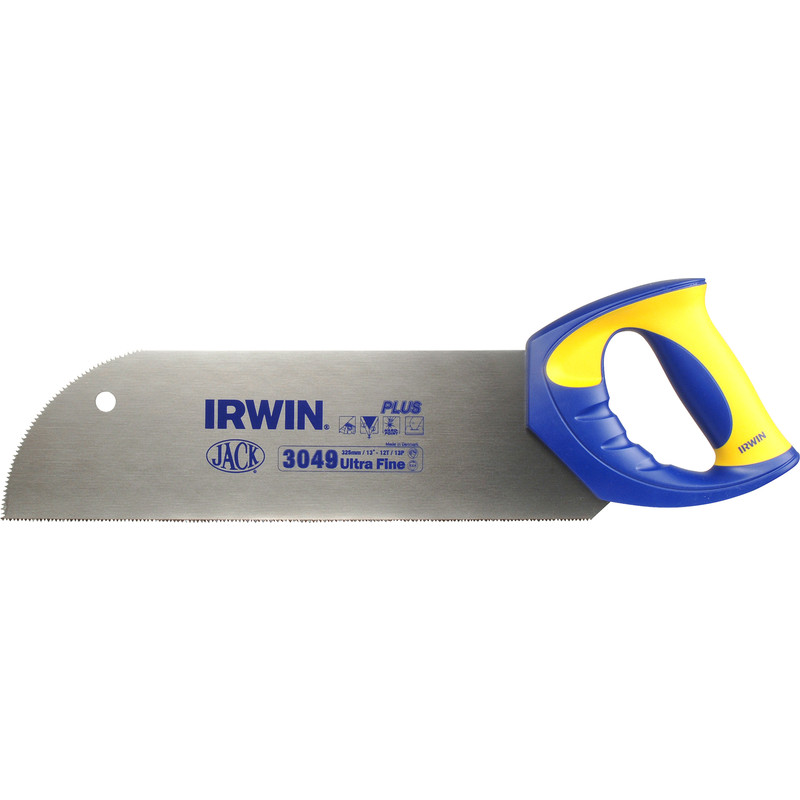
Floorboard Saws
Floorboard saws can cut various types of floorboards – even if they’re already laid. These saws are equipped with teeth both on the bottom of the blade and along the curved nose, making them useful for cutting floorboards that are already installed. They can also be used for plunge cutting, allowing you to begin cutting at any point in the material.
Most floorboard saws cut on the push stroke, with small teeth and shallow gullets to remove a small amount of material at a time for a neat finish. They can tackle tasks that may be too awkward for other saw types to manage because of the angles needed to get a professional finish.
The small teeth with shallow gullets are perfect for making the floorboards look neat, but will take longer to get through the material than other saws because they prioritise quality over speed.
Advantages
-
Small teeth give a neat finish
-
Can tackle tasks at awkward and tight angles
Things to Consider
-
Prioritise quality of cut over speed

Coping Saws
Coping saws look like hacksaws, but cut on the pull stroke using a thin blade connected between two sides of a U-shaped frame. Many coping saws can be adjusted so you can cut at various angles and make complex shapes. The straight handle allows you to tighten and loosen the blade in the frame with ease.
One of the main advantages of a coping saw is that you can remove the blade and thread it through a hole in material to cut out intricate shapes from the inside. They also give a very neat finish because they have a high number of teeth per inch.
Coping saws can’t be used on material greater than an inch thick, as they’re not hardy enough to cut through anything thicker. They’ll also cut material slower than other saw types because of the small teeth and shallow gullets, which could be a problem if you’re working on a big project.
Advantages
-
Can cut shapes from the middle of material
-
Neatly creates intricate shapes
-
Blade can be angled for extra flexibility
Things to Consider
-
Less suited for thick material and fast, rough cutting
-
Smaller teeth will mean the job takes slightly longer
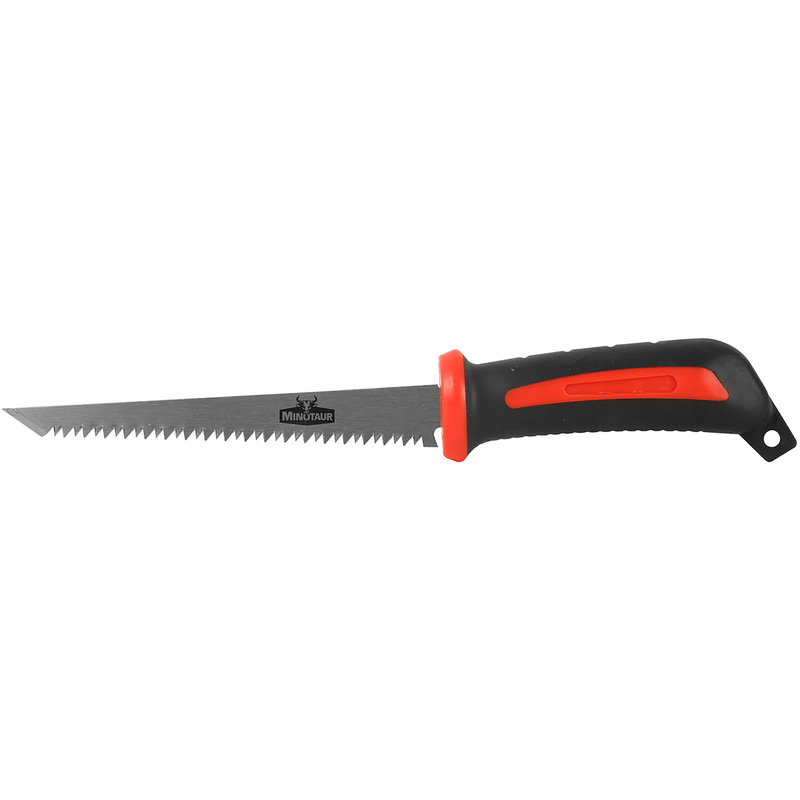
Jab Saws
A jab saw, also known as a drywall saw or keyhole saw, is used for cutting holes, notches and awkward details in plasterboard and drywall. There are fixed blade and retractable options which are safe to store in toolboxes.
They have a sharpened tip which offers faster cutting into material, and you can make plunge cuts into drywall without a pilot hole which can speed up your project.
Jab saws aren’t suitable for heavy-duty applications including plywood, tile, and acoustic drywall types that have concrete in.
Advantages
-
Create notches and holes in plasterboard and drywall
-
Retractable blade options make them safer
-
Sharpened tip – fast cutting and no pilot hole needed
Things to Consider
-
Not strong enough for many uses other than plasterboard and drywall
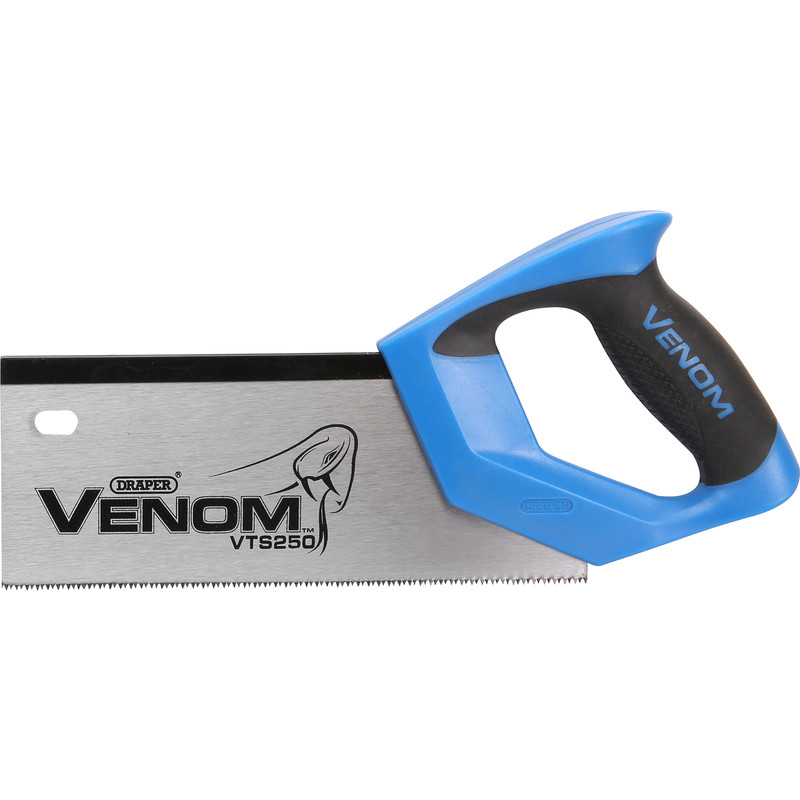
Tenon Saws
Tenon saws have a relatively short blade compared to other saws, a stiff spine along the back, and a closed pistol handle. They have a high number of teeth per inch and mostly cut on the push stroke. Tenon saws are most commonly used by furniture makers and general woodcrafters, often to make mortice or tenon joints in hard and soft wood.
These types of saws make precise, straight cuts because of their high TPI, and they give you a good level of control over all angles while cutting. Tenon saws are also relatively small and lightweight which makes them easy to use.
Tenon saws are less suited to cutting through thick material, and the small teeth will make the job take longer. Additionally, you have less control when push-pulling the blade, meaning there’s a greater chance of injury than other saws if you’re not careful.
Advantages
-
Make precise, straight cuts
-
Good control on the push stroke, meaning greater accuracy
-
Small, lightweight and easy to use
Things to Consider
-
Not suitable for cutting through thick material
-
Small teeth will make the job take longer
-
Push-pull strokes will reduce the level of control, which could lead to injury
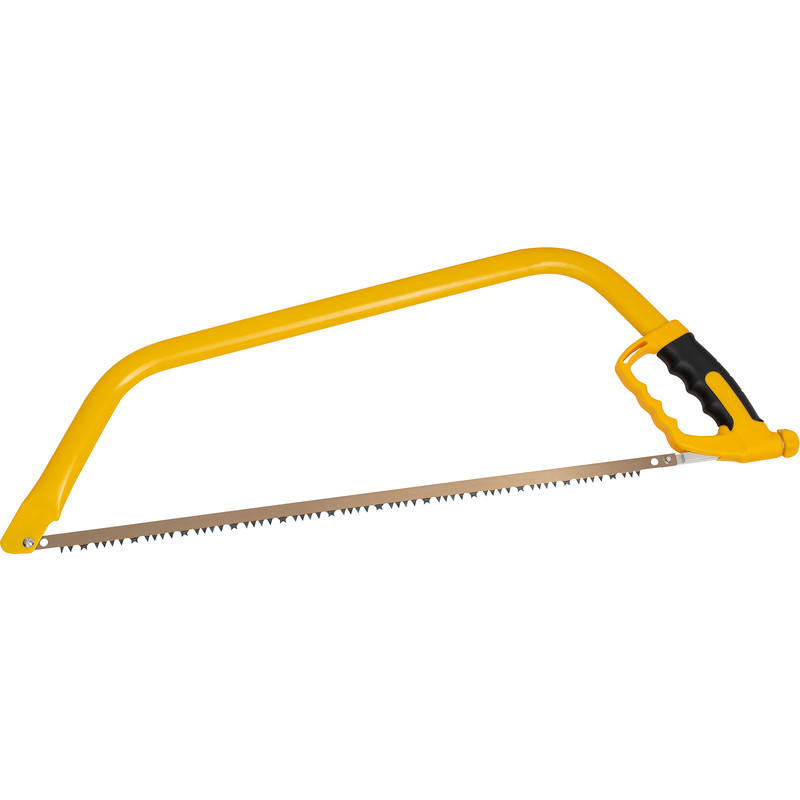
Bow Saws
A bow saw has a bow-shaped frame, a long, straight blade and a closed pistol grip handle. They tend to be lightweight for their size and the blade can be removed from the frame so it can be sharpened or replaced. Bow saws are used for cutting large bits of wood such as tree branches, or sawing logs to size.
They’re versatile saws with two types of blade to choose from, including peg tooth – triangular teeth in groups of three and designed to cut dry, hard wood. Alternatively, peg and raker tooth blades are made of four triangular teeth followed by one that looks split in two and splayed outwards, which can cut wet and dry wood. Both blade styles allow for fast, rough cutting of wood, and peg and raker tooth blades will also remove material as they're cutting.
Bow saws will leave a rough finish because they have very few teeth per inch, which aren’t designed for neat cutting. They also have a large frame which means you’ll need enough space to move the saw.
Advantages
-
Very fast cutting of hard, soft and even wet wood
-
Peg and raker tooth blades can remove material whilst cutting
-
Handle style protects the user for faster, more aggressive cutting
Things to Consider
-
Leave a rough finish
-
Large frame less suitable for small spaces
Types of Power Saw
Power saws use electricity - from a battery or mains power - to cut through materials with speed and ease. You'll find different types of electric saws for wood, metal, and even masonry.
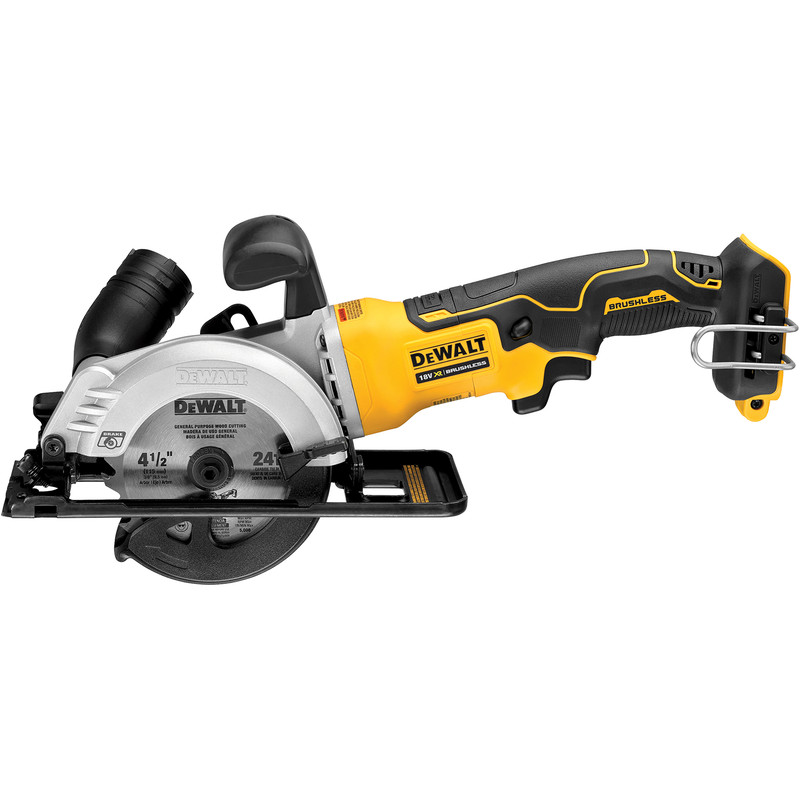
Circular Saws
A circular saw is a fast-rotating round, flat blade. They feature height and bevel adjustments, and guards to protect the user from touching the blade. Circular saws can be used to cut wood, plastic or metal depending on the type of blade.
Circular saws are portable which set them apart from some other power saws which can’t be easily moved. They’re a versatile type of saw because you can change the blade depending on the material you’re cutting. Circular saws are also easy to use and maintain by simply replacing the blade.
These saws have the potential for kickback if the blade catches on something – so care must be taken! Circular saws will also create a lot of dust and noise which can be frustrating if you’re working on a project for a long time.
Advantages
-
Portable
-
Replaceable blade makes them versatile and easy to maintain
-
Easy to use
Things to Consider
-
Potential for kickback which could be dangerous
-
Creates a lot of dust and noise
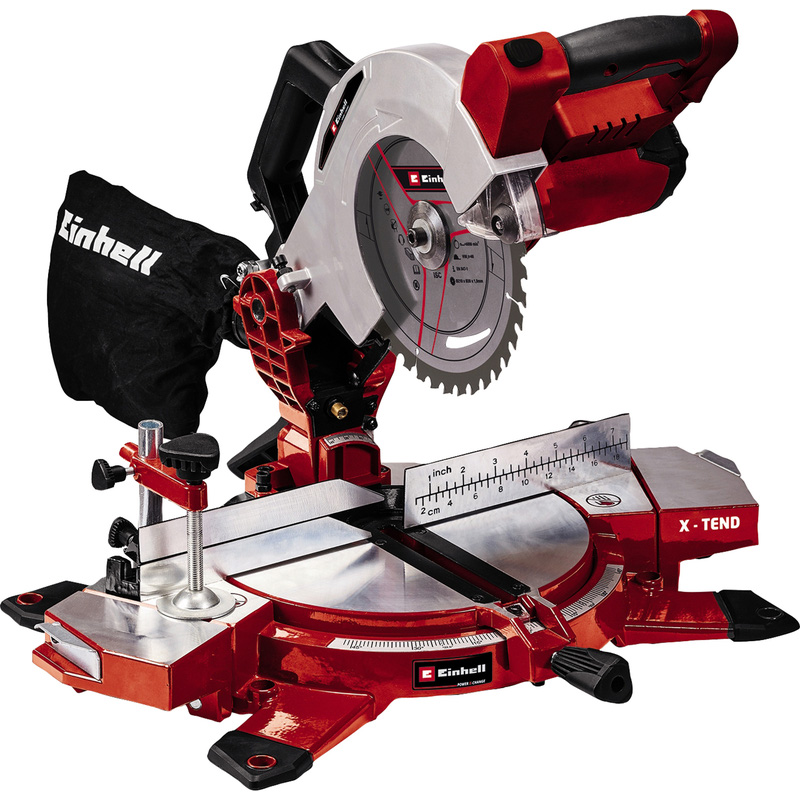
Mitre Saws
A mitre saw is a type of stationary power saw that can make precise cuts at varying angles in material. Sliding mitre saws have rails so the blade can move back and forth, whilst non-sliding mitre saws can only move up or down. Single-bevel saws will cut a mitre to one side only, while double-bevel mitre saws will cut at angles to the left and right.
The main advantages of mitre saws is their precision when cutting angles in a surface. The wide range of styles and sizes of mitre saws mean it’s easy to find the right one for your budget and project requirements. Mitre saws are great for cutting quickly and accurately for large projects.
Mitre saws won’t be the answer to all of your cutting needs – they’re simply an addition to your toolkit rather than an all-rounder. Mitre saws also have a limit on the width of the material they can cut – especially non-sliding varieties.
Advantages
-
The only saw that can create precise angles
-
Range of styles and sizes for any project
-
Quick and accurate cutting for large projects
Things to Consider
-
Limited width they can cut

Reciprocating Saws
Reciprocating saws, also known as sabre saws, are a type of handheld power saw. The blade is moved by the motor in backwards-and-forwards strokes to carry out demolition work, including cutting and ripping out the materials around doors and windows, as well as through joists and plasterboard.
Reciprocating saws can be used with a variety of blade types to cut a range of materials, including wood, metal and plasterboard. This makes them a versatile saw that can quickly get through pretty much any building material.
Designed to cut through both soft and hard materials simultaneously, reciprocating saws can be susceptible to kickback – as the blade is more likely to get caught on different materials. This can increase the risk of injury, so it's important to be cautious when using these saws. They can also be moved in any direction which is handy for demolition, but could become difficult to control.
Advantages
-
Able to cut through a range of materials
-
Hand held – easily manoeuvre the saw through material
Things to Consider
-
Prone to kickback
-
Manoeuvrability could make the saw dangerous
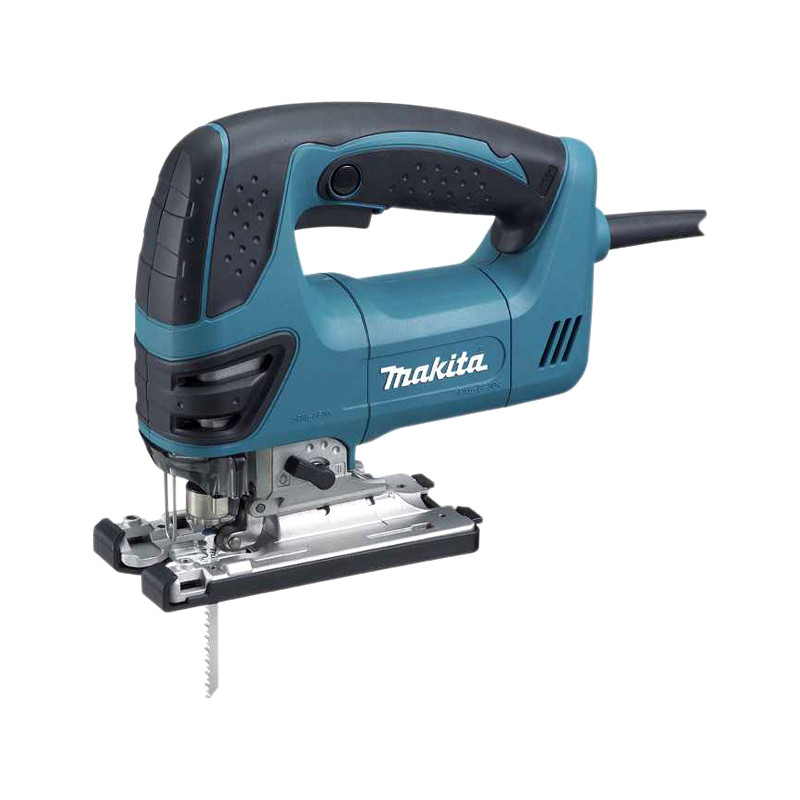
Jigsaws
A jigsaw uses a reciprocating blade driven in an up-and-down motion. There are two handle types to choose from: top handle or barrel grip. Top-handle jigsaws are more common and easy to move, whilst barrel-grip jigsaws have a lower centre of gravity which can improve accuracy. Jigsaws are used for cutting irregular, intricate curves such as stencilled designs into wood, metal, plastic or even ceramic.
Jigsaws are also good at making straight cuts and bevel cuts - so they’re a highly versatile power saw. They’re not very heavy, making them easy to manoeuvre and guide along stencilled designs. There are also a variety of blade types available made for different material types and sizes.
They’re less powerful than other saw types and the blades – perfect for intricate cutting – are more delicate, so may break down more often than other saws. If you’re wanting a perfectly straight line, other types of power saw such as a circular saw or mitre saw may get you a more precise cut.
Advantages
-
Easy to manoeuvre and guide along stencils
-
Blades are small and can fit into tight spaces
-
Wide variety of blades available for any project
Things to Consider
-
Less powerful than other types of power saws
-
Delicate blades which may break down more often
-
Less accurate for perfectly straight lines
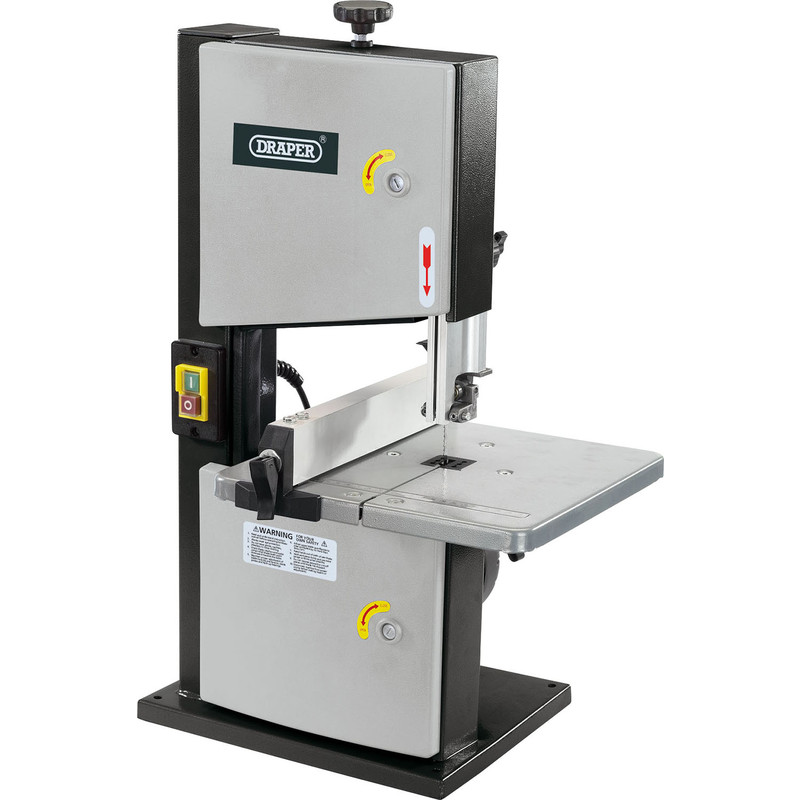
Bandsaws
Bandsaws are a type of power saw that feature a long, continuous toothed metal blade running between two wheels. There are three types of blade available. Regular blades have straight, evenly spaced teeth and deep gullets for cutting wood and metal. Hook blades have large spaces between the teeth and deep gullets which make fast, coarse cuts in plastic, metal and thick wood. Skip blades have shallow gullets and widely spaced teeth for softwood and non-ferrous metals.
Bandsaws give you a quick cut, regardless of the material – and can get through thick pieces of material. They’re also good at cutting irregular shapes because you can reorient the material in any direction as you push it through. Bandsaws will also pull sawdust below the table for more visibility and active control over what you’re cutting.
They don’t achieve as high-quality finishes as other types of power saws as they're better for quick cuts. Bandsaws are also not usually designed to cut mitres and precise angles – although there are some built for this purpose.
Advantages
-
Quick cutting speeds
-
Able to cut irregular shapes
-
Pulls sawdust below the table
Things to Consider
-
Lower quality finish
-
Most can’t cut precise angles and mitres
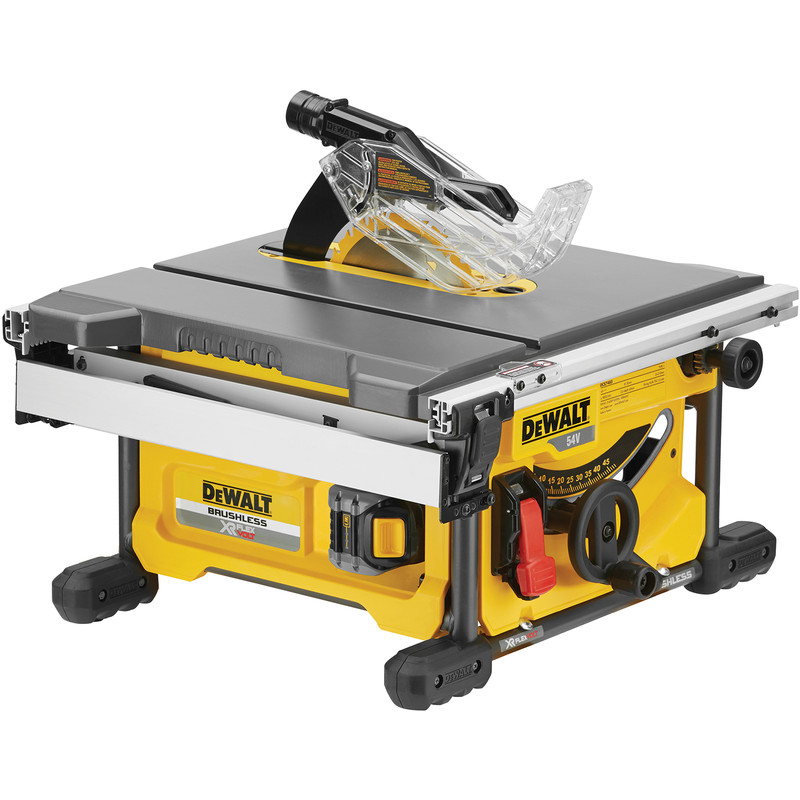
Table Saws
Table saws are a type of circular saw that’s been mounted under a table’s surface, with some of the blade exposed. The user feeds the material into the blade whilst the saw is rotating. Most of the time, the table that the saw is mounted under has measurements and angles to make it easier to get a precise cut.
Table saws are most commonly used for cutting across and with the wood grain, making them versatile for cutting wood in different directions without damaging the material. They also cut very fast and accurately because of the strong blade and measurements on the table.
The blade of a table saw isn’t protected by a guard, meaning kickback can be even more dangerous than other types of power saws. They’re also less portable than other types of power saw, because they’re built into the table. This makes table saws much more suited to workshops rather than vans.
Advantages
-
Versatile – can cut across and with the wood grain
-
Fast and accurate cutting
Things to Consider
-
Risk of kickback which could lead to injury
-
Blade isn’t protected by a guard
-
Not easy to move around
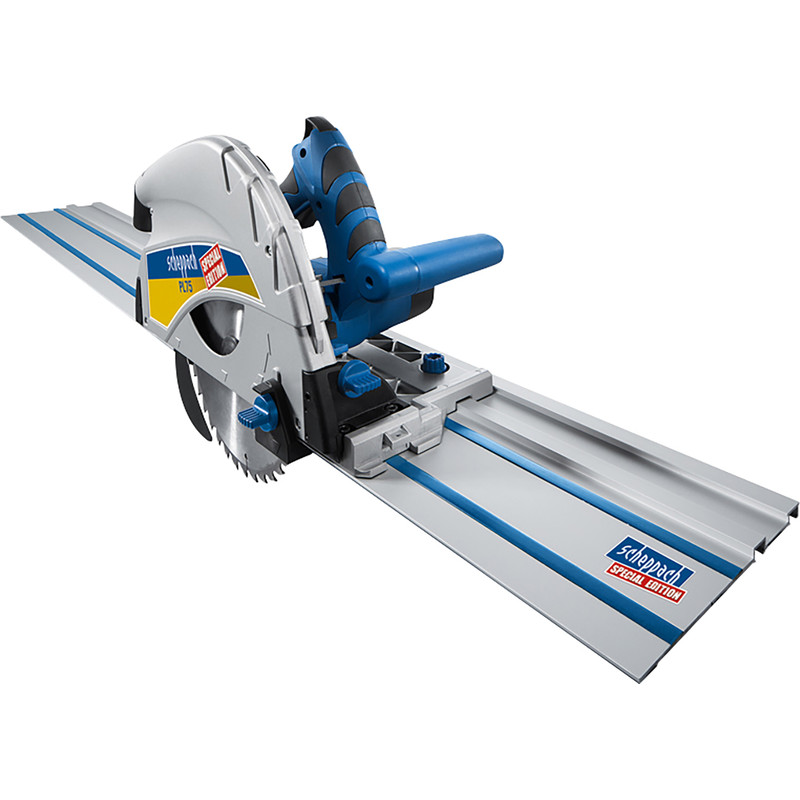
Plunge Saws
Plunge saws, also known as track saws, are a type of handheld circular saw that slides on a rail during use. They’re used for cutting a hole in materials such as wood, plywood, MDF, OSB, particle board, hardboard and more. They’re also commonly used for making space in worktops for sinks and hobs.
The main advantage of plunge saws is that they can start cutting anywhere in the material by plunging downward, rather than from the edge. They provide a high quality cut with no splintering, so the material won’t get damaged, and will need very little work to make the edge smooth. They’re also relatively portable considering the size of some of the rails.
The tracks can be long, depending on the size you get – which could make working in a tight space, such as smaller kitchens, difficult. Plunge saws are also less suited to materials that aren’t stiff enough to support them – an uneven surface on the material will then limit the ability for the blade to make precise cuts.
Advantages
-
Cut a hole anywhere in the material, rather than from the edge
-
High quality cut with no splintering
-
Relatively portable
Things to Consider
-
Working in a tight space could be difficult
-
Less suited to materials that aren’t stiff enough to support the saw
-
Uneven surface will stop the saw being able to make precise cuts

Oscillating Multi-Tools
An oscillating multi-tool, as the name suggests, is more than just a power saw. The head of the multi-tool moves back and forth thousands of times every minute, up to 20,000 oscillations for some top-end models. They’re mostly used for cutting wood, metal and PVC.
The main benefit of an oscillating multi-tool is that you can cut down on the number of tools in your everyday toolbox by carrying just one and replacing the different heads. These relatively small, handheld tools are also perfect for tight spaces where larger power saws can’t fit. Because they’re handheld, you’ll also find they offer greater control such as around finished tiles while you’re removing adhesives with the scraper head.
Oscillating multi-tools are great at doing a lot of things, but you may find that specialist power saws will offer a better, more precise, and neater cut. You may also find that the price of the different head types is higher than you’d expect – so they shouldn’t be thought of as a cheap way out of buying high quality power tools.
Advantages
-
Cut down on the number of tools you’re carrying around
-
Perfect for tight spaces where larger saws can’t fit
-
Handheld design offer greater control
Things to Consider
-
Specialist power tools may do a better job in some cases
-
Price of multi-tool accessories can be high

Scroll Saws
A scroll saw is like a powered coping saw that’s installed on a bench. They’re often used for making intricate cuts in small delicate pieces of wood, plastic, metal, and even glass with the right blade! The blade teeth point downwards which make scroll saws suitable for detailed cuts in thin wood.
Similar to a coping saw, a scroll saw blade can be removed and fed through a drilled hole to cut the inside of a material for fully enclosed cutting. This allows it to accomplish tasks that other power saws may not be able to do, aside from a plunge saw. You’ll find the blade also has a relatively long life compared to other saw blade types.
Scroll saws, whilst a valuable piece of equipment for some tradespeople, won’t be of much use to DIYers or certain trades compared to other specialty saws – especially because coping saws do a similar job. Scroll saws are also not designed to cut material any thicker than about an inch, as the blade won’t be strong enough.
Advantages
-
Remove the blade to make cuts inside a piece of material
-
Blade has a relatively long life compared to other saw blade types
Things to Consider
-
Coping saws will also do the job well enough in many cases
-
Blade can’t take cutting into materials much thicker than an inch

Concrete Saws
Concrete saws, also known as a roadsaw or a consaw, are a type of circular saw with an ultra-strong diamond blade. They can also use petrol as a power source, making them extremely powerful. As the name suggests, they’re used for cutting hard materials like concrete, asphalt, brick, masonry and tile, and can be used in the repair, demolition or modification process.
They’re better than other saws at withstanding heat from friction thanks to the concrete saw’s strong blade, and can cut through some of the hardest materials with ease. It’s also possible to cut into wet or dry material with a concrete saw. Wet cutting will reduce the amount of dust – making it more comfortable and healthier to carry out the job.
Concrete saws are heavy and not the easiest tool to operate – although if you want to cut concrete they’re your best option. It’s important to keep an eye on the blade to ensure it’s cooling down in order to prolong its life. You’ll want to regularly stop cutting in order to allow the blade to cool down, which could slow down the job.
Advantages
-
Withstand very high heats from friction
-
Cuts through some of the hardest materials with ease
-
Wet and dry cutting possible – wet cutting can reduce dust
Things to Consider
-
Heavy and not very easy-to-use for a long time
-
Keep an eye on the blade to ensure it’s cooling fully
-
You’ll want to regularly stop cutting to allow the blade to cool
Key Saw Features
Teeth per inch (TPI)
The number of teeth per inch (TPI) on a saw blade affects how the blade will interact with different surfaces. Softer materials will need a lower TPI to avoid damaging the material and offer a neater finish, whilst harder materials such as metal will need a higher TPI to make a cut.
You’ll also find that the higher the TPI, the better the quality of the cut and finish – for a faster and rougher cut you’ll want a blade with fewer teeth per inch.
It’s important to note that bigger saws will often have more teeth, but not necessarily a higher TPI.
Size
As you’d expect, you’ll want a larger saw for larger tasks so you can use long strokes and get through the material more easily. However, if you’re after delicate and intricate cuts, small saws, small blades and short strokes will be best.
You may also find that larger saws may not give as smooth a finish as smaller saws in many cases – but this will also depend on the TPI and the type of blade.
If you’re debating between two similar sizes of hand saw, it can help to think about a saw that will fit in your toolbox – this will be easier to keep the blade protected and protect you and others from accidental injury.
Gullets
Gullets refer to the spaces between the teeth. If a blade has fewer teeth, it’ll have deeper gullets which means a more aggressive, chiselling action.
You’ll also find some blades referred to as coarse, fine, and universal. Coarse blades have large gullets and a lower TPI so they can rip through materials quickly – but will leave a rough finish.
Fine blades have small gullets and more teeth per inch so they’re better suited to delicate work, whilst medium – universal – blades are somewhere in the middle of coarse and fine.
Handle Type
The three most common handle types are closed pistol-grip handles, open pistol-grip handles, and straight handles.
Closed pistol-grip handles are used with larger blades, and protect the user's hand from slipping – perfect for fast, aggressive cutting. Open pistol-grip handles are found on small saws used for working in awkward spaces because of the curved, lightweight handle.
Straight handles offer control and are turned easily in your hand so you can cut intricate shapes. They’re not used for fast cutting because it’s hard to apply force.
Blade Material
Most blades will be made of steel, but you may find that some have diamond-tipped teeth for added strength.
C75 steel is very common. It’s strong and resistant to corrosion because it has a high carbon content of 0.7% to 0.8%.
65 MN Spring Steel has manganese in, which makes the blade harder and gives it a longer life. You’ll also find 0.85mm SK5 blades which can offer high levels of power transfer and are commonly used to increase the power of hand saws.

